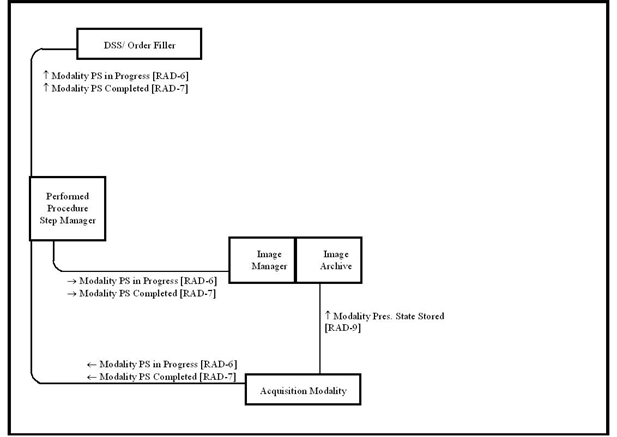Presentation of Grouped Procedures
Presentation of Grouped Procedures (PGP) Profile specifies how a subset of images acquired in a single scan grouped by the acquisition modality operator for multiple requested procedures, can be associated to an individual requested procedure of those grouped requested procedures(e.g. head, chest, abdomen) for viewing and subsequent reporting.
Summary
Presentation of Grouped Procedures facilitates viewing and reporting on images for individual requested procedures (e.g. chest, abdomen, pelvis) that an operator has grouped into a single scan.
Benefits
Enhanced Workflow
- One Image acquisition, multiple reports
- Simplifies Images acquired once for multiple procedures
- Flexibility for acquisition workflow optimization
- Flexibility to impove Patient confort
- less radiation dose necessary
Enhanced Softcopy Interpretation
- maintains record of source as single set of images
- flexibility to access images softcopy record for optimal reporting
- consistant linkage between images acquired and images reported
Details
The Presentation of Grouped Procedures Integration Profile (PGP) addresses what is sometimes referred to as the linked studies problem: viewing image subsets resulting from a single acquisition with each image subset related to a different requested procedure (e.g. CT chest, abdomen and pelvis).
Presentation of Grouped Procedures (PGP) provides a mechanism for facilitating viewing images and reporting on individual Requested Procedures that have been fulfilled by a single Performed Procedure Step acquisition. The imaging operator often will group procedures for the sake of acquisition efficiency and patient comfort.
A referring physician or General Practicioner provides a set of individual orders all requiring the same modality that could be acquired while doing the same study. Rathar than aquiring each image set seperatly, the operator choses to group the procedures and acquire the image set in a single study. The classic example of this grouped study is a CT chest, CT abdomen and CT pelvis scan. Note that individually there could be a total of 250 images assocoated with these procedures with 40% overlap of images acquired. By grouping requested procedures to an image acquisition of a single scan, the need for the additional scanning for acuiring the overlapping images has been elliminated.
For each requested procedure, a subset of acquired images are linked. The linking association to the individual procedure is created at the modality either as part of the acquisition planning or post acquisition as part of the Quality Assurance process.
The link association of images to the individual requested procedures is though the combined usage of the Modality Performed Procedure Step (MPPS) and Grey Scale Presentation State (GSPS). The GSPS contains the manifest of images and how to present the images on a display. The MPPS provides the linkage of the GSPS to the individual procedure step.
A reading physician may now use the linked study created by the technologist to facilitate viewing and interpreting the grouped images as seperate image sets. This facilitates interpretation as well as reviewing the relevant subset of prior images.
Systems Affected
Systems involved in this profile are:
- Radiology departmental information systems that manage department scheduling (i.e., radiology information system (RIS))
- Radiology image management/archiving (i.e., picture archiving and communication system (PACS))
- Acquisition modalities
Actors & Transactions:
Specification
Profile Status: Final Text
Documents:
IHE Radiology Technical Framework:
Underlying Standards:
See Also
Related Profiles
This profile is dependent upon the following Integration Profiles
- Scheduled Workflow
- Consistent Presentation of Images

